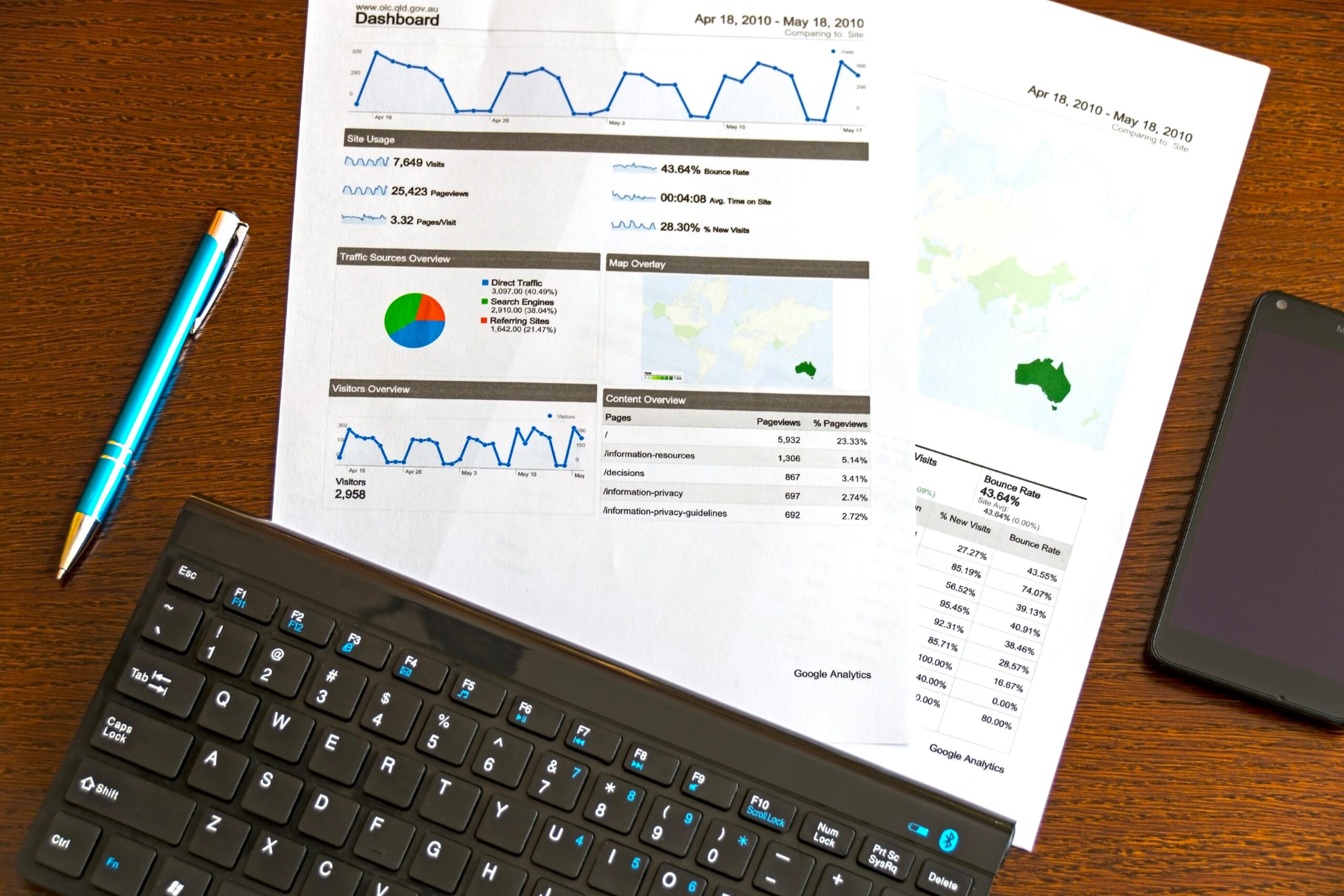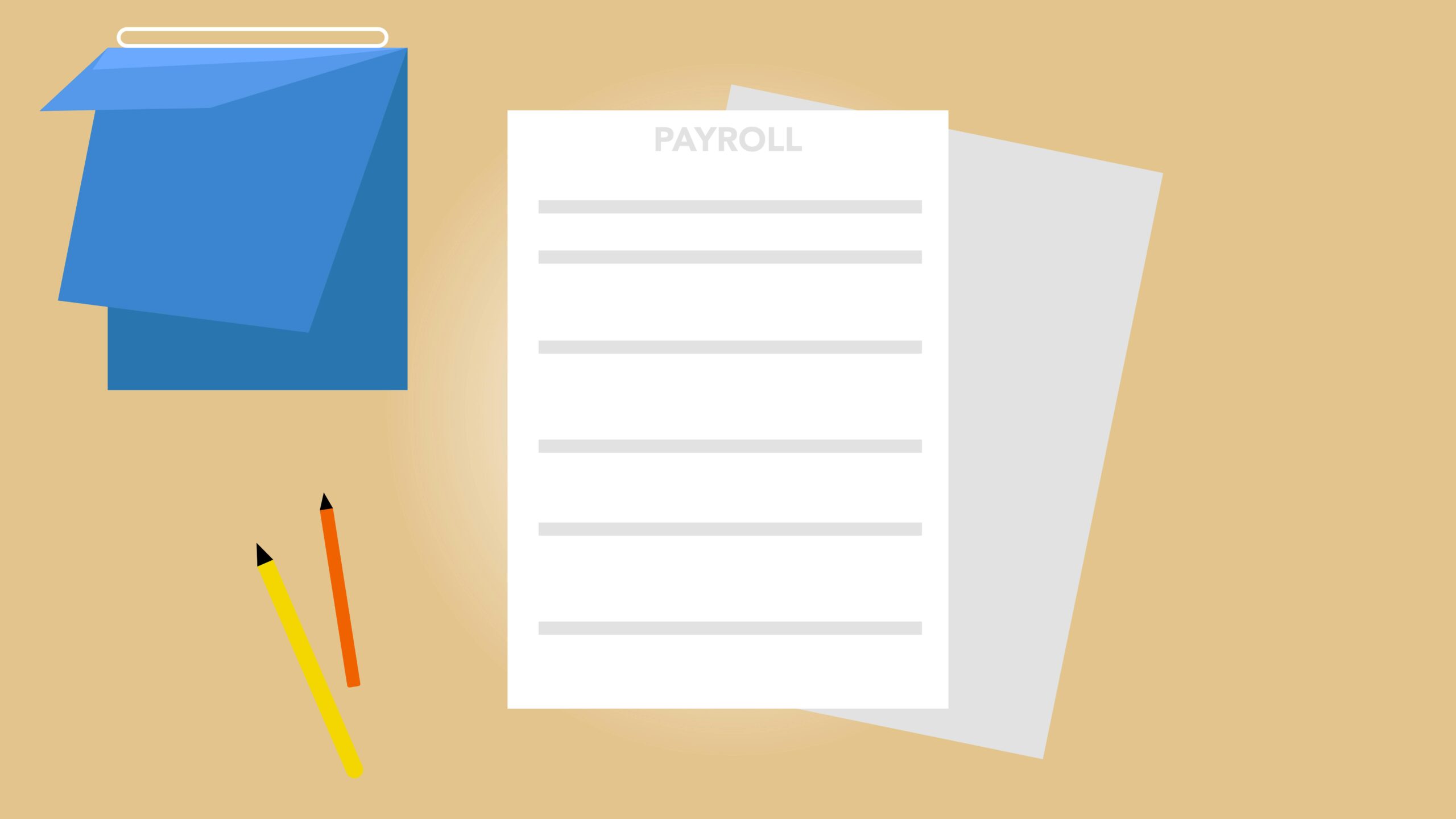Many businesses experience seasonal cash flow fluctuations that impact their ability to operate smoothly throughout the year. Whether it’s retail companies preparing for holiday demand or agricultural businesses dealing with harvest cycles, these shifts can create cash flow constraints that make it challenging to cover regular expenses. Accounts receivable financing is a powerful tool that can help bridge these gaps, ensuring that businesses maintain cash flow even when income is uneven. In this post, we’ll explore how accounts receivable financing works and how it can effectively address seasonal cash flow issues. Understanding Seasonal Cash Flow Challenges Seasonal cash flow challenges arise when a business has periods of high income followed by low-income stretches, resulting in cash flow imbalances. During high-sales periods, businesses are often flush with cash, but as demand falls, they may struggle to meet expenses such as payroll, rent, or supplier payments. For example: These fluctuations can make it difficult for companies to grow, invest, or even maintain regular operations, which is why addressing seasonal cash flow is essential for sustained success. What Is Accounts Receivable Financing? Accounts receivable financing, also known as invoice financing, is a financial solution that allows businesses to use their unpaid invoices to secure immediate cash. Rather than waiting 30, 60, or 90 days for customers to pay, businesses can sell these invoices to a lender (known as a factor) or use them as collateral for a loan. This financing provides quick access to funds tied up in receivables, giving businesses the liquidity needed to cover expenses, invest in growth, and maintain financial stability during low-revenue periods. How Accounts Receivable Financing Can Stabilize Seasonal Cash Flow Accounts receivable financing can help smooth out cash flow by providing immediate funds when income is limited. Instead of borrowing a loan with fixed terms or adding debt to the balance sheet, businesses use their existing invoices to access capital on demand. This financing strategy offers a flexible solution that can be adjusted according to cash flow needs throughout the year. How It Works: This cycle allows businesses to have predictable cash flow regardless of payment terms, supporting financial stability across different seasons. Types of Businesses That Benefit from Seasonal Financing Many industries are subject to seasonal demand fluctuations. Accounts receivable financing is particularly beneficial for: By using accounts receivable financing, businesses across these industries can manage seasonal cash flow needs without relying on traditional loans. Advantages of Accounts Receivable Financing for Seasonal Cash Flow Accounts receivable financing provides numerous benefits for businesses facing seasonal cash flow challenges. Some of the key advantages include: a. Immediate Cash Access Accounts receivable financing allows businesses to access cash tied up in unpaid invoices, reducing the waiting period for payments and providing funds as needed. This immediate access ensures that companies can cover expenses without disrupting operations. b. Flexible and Scalable Financing Unlike traditional loans, accounts receivable financing is tied directly to the volume of invoices, making it a scalable solution. As seasonal demand increases, businesses can finance a larger number of invoices; as demand decreases, they can scale down, avoiding unnecessary debt. c. No New Debt Since accounts receivable financing isn’t considered debt, it won’t negatively affect your business’s balance sheet or credit profile. This allows businesses to access funds without the burden of fixed monthly payments or interest. d. Improved Cash Flow Predictability For seasonal businesses, knowing they can rely on consistent cash flow—regardless of customer payment delays—creates stability. Predictable cash flow is essential for budgeting and financial planning, especially during off-peak seasons. e. Potential to Improve Customer Relationships Some accounts receivable financing companies handle invoice collection directly, which can relieve your team from managing collections and improve cash flow without pressuring customers. This lets businesses maintain positive client relationships while ensuring timely payments. Implementing Accounts Receivable Financing as a Cash Flow Solution Integrating accounts receivable financing into your financial strategy can provide a reliable solution to seasonal cash flow gaps. Here’s how to make the most of it: a. Evaluate Seasonal Cash Flow Trends Understanding your cash flow trends will help you pinpoint when financing will be most beneficial. Review sales patterns, peak demand periods, and off-season expenses to identify times when cash flow dips occur. b. Choose the Right Invoices for Financing Consider financing invoices from creditworthy customers with consistent payment histories. High-value invoices are ideal for securing larger advances that can support major expenses. c. Work with a Reputable Financing Partner Selecting a financing company with a good reputation and experience in your industry can make the financing process smoother and more beneficial. Look for partners with transparent fees, reliable customer service, and industry expertise. d. Use Funds Strategically Apply the funds from accounts receivable financing to cover essential costs or invest in growth. Common uses include payroll, inventory, marketing, and operational expenses. Strategic use of these funds will maximize the impact on your business. Steps to Prepare for Seasonal Cash Flow with Financing To ensure that accounts receivable financing is as effective as possible, you’ll want to take steps to prepare for seasonal cash flow needs in advance. Step 1: Conduct Cash Flow Analysis Understanding the timing of your cash flow needs will allow you to plan financing accordingly. Analyzing your cash flow data helps you determine the best time to access financing and the volume of funds required to cover seasonal gaps. Step 2: Set Clear Payment Terms with Clients Establishing clear payment terms with clients helps you maintain predictable accounts receivable. Specify payment deadlines, offer early payment incentives, and build in late fees when necessary to encourage on-time payments. Step 3: Review Customer Creditworthiness To minimize the risk associated with unpaid invoices, evaluate the creditworthiness of your clients. Financing invoices from reliable customers lowers the risk of payment delays and reduces costs associated with collections. Step 4: Plan for Growth During Peak Season Using financing to invest in inventory, staffing, and marketing during peak season will allow your business to capitalize on high demand. Ensure you have a strategy to meet
Grow Your Business with Accounts Receivable Funding
In a competitive marketplace, businesses constantly seek ways to grow and expand without straining their cash flow. Accounts receivable financing is one effective solution that can accelerate growth by providing the necessary funds tied up in unpaid invoices. This guide will explore how accounts receivable financing works, its benefits, and how it can expedite business growth. Understanding Accounts Receivable Financing Accounts receivable financing, also known as invoice financing, is a financial arrangement that allows companies to use their unpaid invoices as collateral to access immediate cash. This type of financing is particularly useful for businesses with lengthy payment terms, as it converts pending invoices into working capital without waiting for clients to pay. The Impact of Cash Flow on Business Growth Cash flow is the lifeblood of any business, especially when it comes to growth. Consistent cash flow allows companies to meet operational expenses, invest in new opportunities, and reduce reliance on debt. However, when revenue is tied up in accounts receivable, cash flow slows down, affecting a company’s ability to grow. How Accounts Receivable Financing Works Accounts receivable financing involves a lender, known as a factor, advancing a percentage of the invoice’s value to the business. Once the customer pays the invoice, the factor remits the remaining balance (minus a service fee). This process provides fast access to cash, which can be used for various growth initiatives, like hiring, inventory purchase, or equipment upgrades. Types of Accounts Receivable Financing Accounts receivable financing comes in different forms, each catering to specific business needs: a. Factoring In factoring, a business sells its outstanding invoices to a financing company (factor) at a discounted rate. The factor takes over the responsibility of collecting payments, relieving the business from managing receivables. b. Asset-Based Lending Asset-based lending (ABL) is a loan secured by company assets, including accounts receivable. Businesses receive a line of credit based on the value of their receivables, and as clients pay their invoices, the available credit replenishes. Advantages of Accounts Receivable Financing for Growth Using accounts receivable financing offers distinct advantages for businesses aiming to grow: These benefits create a stable financial foundation, making it easier to support growth without draining reserves or taking on new debt. How Accounts Receivable Financing Drives Faster Growth By transforming invoices into working capital, accounts receivable financing can significantly expedite business growth in several key areas. a. Improved Cash Flow Cash flow is one of the main challenges businesses face when pursuing growth. Accounts receivable financing ensures consistent liquidity, empowering companies to: b. Expansion Opportunities With accounts receivable financing, businesses can take on larger projects or contracts that may have previously strained cash flow. Examples of Expansion Opportunities: c. Strategic Investments Accounts receivable financing makes it possible for businesses to make strategic investments that drive long-term growth, such as: These investments lay the groundwork for sustained growth by enhancing the company’s operational capabilities and market reach. When to Consider Accounts Receivable Financing Accounts receivable financing can be particularly beneficial in the following situations: Evaluating your cash flow patterns and business needs will help determine if accounts receivable financing is a good fit for your growth plans. Selecting an Accounts Receivable Financing Partner Choosing the right financing partner is essential to maximizing the benefits of accounts receivable financing. Consider these factors: Selecting the right financing partner will ensure you get the most value from your accounts receivable financing arrangement. Common Questions about Accounts Receivable Financing Q1. Is accounts receivable financing the same as a loan?No, accounts receivable financing is not a loan; it involves selling or borrowing against unpaid invoices, so it doesn’t add debt to your balance sheet. Q2. How quickly can I access funds through accounts receivable financing?Most financing companies release funds within 24-48 hours after approving your invoices, providing quick access to capital. Q3. Are there any restrictions on how I use funds from accounts receivable financing?No, funds are typically unrestricted, allowing you to use them for any business-related expenses, from payroll to marketing. Q4. How does accounts receivable financing affect client relationships?If using factoring, clients may be notified that their payments are directed to the factor, but reputable factors manage collections professionally to maintain positive relationships. Conclusion: Accelerate Growth with Accounts Receivable Financing For businesses looking to expedite growth, accounts receivable financing offers a valuable solution to enhance cash flow without increasing debt. By unlocking capital tied up in unpaid invoices, companies can focus on expansion, strategic investments, and operational improvements, all of which drive long-term success. With the right approach and financing partner, your business can thrive in today’s competitive market, taking advantage of every growth opportunity that comes your way.
Smart Strategies to Avoid Bad Debt
Bad debt is one of the biggest challenges that small to medium-sized businesses (SMBs) face. When a customer fails to pay their invoice, the impact isn’t limited to lost revenue—it can strain cash flow, disrupt operations, and limit your ability to grow. By understanding the causes of bad debt and implementing proactive strategies, you can minimize risks and protect your business from the financial burdens it can cause. This guide covers effective techniques for reducing and avoiding bad debt, helping you create a more stable and resilient business. Understanding Bad Debt Bad debt occurs when a client or customer cannot pay the amount owed to your business, either due to financial struggles, bankruptcy, or simply failing to settle an invoice on time. It’s typically written off as an expense, but the loss goes beyond the outstanding balance—bad debt can weaken cash flow, restrict access to working capital, and place strain on business operations. In a survey of small businesses, nearly 60% reported cash flow issues related to unpaid invoices, underscoring the importance of addressing bad debt proactively. Why Bad Debt Is a Risk for Businesses Bad debt doesn’t just impact your bottom line; it creates an unstable cash flow, affects your ability to pay suppliers, and limits investments in growth opportunities. For smaller businesses with limited cash reserves, even a few unpaid invoices can disrupt operations and lead to financial instability. Consequences of Bad Debt: Understanding these risks is crucial to building a plan for preventing bad debt before it happens. How to Avoid Bad Debt: Key Strategies Reducing the risk of bad debt involves combining preventative measures, efficient invoicing practices, and consistent customer communication. Below are practical strategies to keep your accounts receivable healthy. a. Conduct Comprehensive Credit Checks Conducting credit checks before working with a new client is one of the best ways to mitigate bad debt risk. Credit reports can reveal potential red flags, such as previous bankruptcies, unpaid invoices, or poor credit scores. How to Use Credit Checks Effectively: Credit checks provide insights into a client’s financial health, allowing you to make informed decisions about extending credit. b. Set Clear Payment Terms One of the main reasons for unpaid invoices is unclear payment terms. Setting clear, concise payment expectations from the start can eliminate misunderstandings and create a strong foundation for reliable payments. Key Aspects of Effective Payment Terms: Discussing these terms upfront shows clients that you expect timely payments and are prepared to enforce your policy if needed. c. Implement a Reliable Invoicing System A streamlined invoicing process ensures that invoices are accurate and sent promptly, which minimizes delays. Use accounting software to automate invoicing, which reduces errors and speeds up payment cycles. Best Practices for Efficient Invoicing: A consistent invoicing routine helps clients develop a habit of paying on time, lowering the risk of bad debt. d. Offer Early Payment Incentives Providing clients with an incentive for early payment can reduce the time between invoice issuance and payment. This strategy is particularly useful for clients who may otherwise be slow to pay. Types of Early Payment Incentives: Incentives not only speed up payments but also foster goodwill, helping you build stronger client relationships. e. Maintain Regular Communication with Customers Regular communication with clients helps avoid misunderstandings, builds trust, and ensures that you’re aware of any financial issues they might face. Developing these relationships can lead to earlier warning signs of payment delays, allowing you to address them proactively. Communication Tips: By maintaining regular contact, clients are more likely to prioritize your payments. f. Monitor Aging Receivables Tracking overdue invoices can prevent bad debt by identifying late-paying clients before their accounts become too delinquent. Set up regular reviews of aging receivables and use this information to adjust credit terms as necessary. Effective Aging Receivables Management: A proactive approach to managing receivables keeps overdue accounts from spiraling into bad debt. g. Use Contracts and Legal Protection Contracts provide legal backing for your payment terms and protect your business in case of non-payment. A well-constructed contract reduces the risk of disputes and establishes clear expectations. Essentials of a Payment Contract: By formalizing your payment agreements, you protect your business and make clients more accountable for their obligations. When to Consider Debt Collection Services If a client’s account is severely overdue and communication efforts fail, consider using a debt collection agency. These professionals specialize in recovering unpaid debts while adhering to regulations. When to Contact Debt Collection Agencies: Collection agencies help you recover unpaid funds, though it’s wise to weigh the costs before committing. Using Technology to Manage and Reduce Bad Debt Digital tools make it easier to manage accounts receivable, track payments, and prevent bad debt. Many platforms now offer end-to-end solutions for invoicing, reminders, and credit checking, helping to streamline your financial operations. Popular Software Options: Using technology to support your invoicing and payment processes reduces administrative burden and minimizes the risk of unpaid invoices. Conclusion: Building a Strong Financial Foundation Bad debt is a common challenge for businesses, but with the right strategies, you can reduce its impact. By implementing robust payment terms, using technology for invoicing, and maintaining regular communication with clients, you can protect your business from the financial strain of unpaid invoices. Additionally, conducting credit checks and creating contracts provides a layer of security that can prevent bad debt from becoming a recurring issue. Incorporate these strategies to strengthen your business’s financial foundation, minimize bad debt risk, and create a cash flow management system that supports long-term growth and stability. By being proactive, you can stay on top of receivables and keep your business financially healthy, regardless of industry conditions or economic shifts.
How to Sustain Longer Loan Payment Terms Without Straining Your Business
For many B2B companies, longer payment terms—typically 60, 90, or even 120 days—are an industry norm. However, waiting that long for payments can pose cash flow challenges, affecting your business’s ability to cover operational expenses, pay suppliers, and invest in growth. Despite the challenges, extended payment terms don’t have to limit your operations or growth potential. In this article, we’ll explore strategies to help your business sustain longer payment terms without sacrificing cash flow or financial health. Why Longer Payment Terms Exist In B2B sectors, extended payment terms are common because they allow buyers to manage cash flow more effectively, while suppliers benefit from the assurance of a sale. Typically, larger corporations require longer terms from suppliers as a condition of business, giving them time to generate revenue before needing to make payments. While this practice is beneficial to the buyer, suppliers can face delayed cash flow, which can strain their operations. Challenges of Extended Payment Terms Longer payment terms can create a significant cash flow gap for businesses, leading to challenges such as: Understanding these challenges is the first step toward building a proactive approach to sustaining longer payment terms without risking your company’s financial stability. Strategies to Sustain Longer Payment Terms To thrive despite extended payment terms, companies can adopt a variety of strategies, including better cash flow management, alternative financing options, and process improvements. Let’s explore these in detail. Understanding and Using Cash Flow Forecasting Cash flow forecasting is an essential tool for any business dealing with longer payment terms. Forecasting involves predicting your company’s future cash inflows and outflows, helping you anticipate cash shortages before they occur. How to Create an Effective Cash Flow Forecast: By forecasting your cash flow, you’ll gain a clearer picture of when funds are low and can take preemptive measures, like using an emergency cash reserve or exploring financing options, to stay ahead. Utilizing Invoice Factoring or Accounts Receivable Financing Invoice factoring and accounts receivable financing can be highly effective for businesses needing fast cash flow solutions when dealing with extended payment terms. Both options are useful tools for sustaining longer payment terms because they turn unpaid invoices into usable cash, allowing you to cover expenses and continue operations without taking on traditional loans. Negotiating with Suppliers for Favorable Terms Negotiating longer payment terms with your suppliers can help align your cash inflows with your outflows. Here’s how to approach this: These negotiations help create mutually beneficial agreements that reduce cash flow pressure while allowing your suppliers to maintain reliable payments. Establishing an Emergency Cash Reserve Building an emergency cash reserve can serve as a financial cushion to bridge cash flow gaps caused by extended payment terms. A reserve fund can support expenses during lean times, providing you with the confidence to operate without stressing over daily cash flow. Building Your Reserve: With a solid cash reserve, your business gains resilience, making it easier to manage extended payment terms and weather unexpected financial challenges. Improving Collections Process for Faster Payments Optimizing your collections process is one of the most direct ways to minimize the impact of longer payment terms. The faster you can collect from your clients, the more stable your cash flow will be. Strategies to Improve Collections: An efficient collections process not only improves cash flow but also enhances client relationships by fostering clear and consistent communication. Leveraging Technology to Streamline Invoicing Technology can play a crucial role in managing longer payment terms by making invoicing, tracking, and payment collection more efficient. Accounting software and automation tools can help streamline these processes. Benefits of Technology in Invoicing: Automation reduces the time spent on administrative tasks, allowing you to focus on other areas of your business and making it easier to manage cash flow with longer payment terms. Conclusion: A Balanced Approach to Payment Terms Sustaining longer payment terms without straining your business requires a blend of proactive financial management, creative financing solutions, and improved efficiency in invoicing and collections. While longer terms can challenge your cash flow, they also present an opportunity to build stronger, more flexible financial strategies. By leveraging tools like cash flow forecasting, invoice financing, strategic supplier negotiations, and technology-driven invoicing, your business can thrive—even with extended payment terms. Focus on creating a stable cash flow foundation, and you’ll be better equipped to seize growth opportunities while maintaining healthy financial operations. Remember, balancing cash flow is a continual process. With the right approach, your business can maintain financial resilience, enabling you to embrace longer payment terms confidently while supporting your growth and sustainability goals.
Understanding Business Loan Terms: What You Need to Know for Smarter Borrowing
Securing a business loan can be essential for business growth, whether it’s for covering operational costs, investing in new equipment, or scaling operations. However, understanding the terms and conditions of a business loan is crucial, as these terms impact not only the repayment plan but also the cost of the loan over time. In this guide, we’ll break down the most important loan terms, their impact on a business, and how to assess the best loan structure for long-term success. Importance of Understanding Business Loan Terms Understanding loan terms can make the difference between a loan that supports growth and one that hinders it. Each loan comes with unique features—interest rates, repayment terms, and fees—that determine the true cost and repayment experience. A clear understanding helps you choose terms that align with your business’s cash flow and financial goals. Common Types of Business Loans Before diving into loan terms, it’s helpful to understand the primary types of business loans, as terms can vary widely depending on the loan structure. Some common business loans include: Term Loans: These are lump-sum loans repaid over a set period with a fixed or variable interest rate. Lines of Credit: These provide access to a revolving line of funds that can be drawn from as needed, with interest charged only on the amount borrowed. SBA Loans: Government-backed loans offering competitive terms, generally for businesses unable to secure financing through traditional means. Equipment Financing: Loans used specifically to purchase equipment, with the equipment often serving as collateral. Invoice Financing/Factoring: Loans where invoices are used as collateral, allowing businesses to access funds upfront rather than waiting for customer payments. Key Business Loan Terms and Definitions Here are some essential loan terms to understand when evaluating a business loan: Principal: The initial amount borrowed. Interest Rate: The percentage of the loan amount charged as interest by the lender. APR (Annual Percentage Rate): A broader measure of the cost of borrowing, including interest and fees. Term Length: The time frame within which the loan must be repaid. Amortization: The process of spreading out loan payments over time. Balloon Payment: A large payment due at the end of a loan term if payments were not fully amortized. Collateral: Assets pledged to secure the loan. Personal Guarantee: A legal promise by business owners to repay the loan if the business cannot. Understanding each of these terms is crucial, as they contribute to the overall structure and cost of a loan. How Loan Terms Affect Total Cost Each component of a loan’s terms impacts its total cost. For example, interest rates determine how much is paid over the life of the loan, while fees can add to upfront or ongoing costs. Longer loan terms reduce monthly payments but can lead to higher overall interest paid, while shorter terms may have higher payments but cost less in the long run. By understanding these cost implications, business owners can assess loan terms that align with their repayment capacity and financial goals. Loan Term Lengths and Their Implications The loan term length is the period over which the loan must be repaid. Here’s how different term lengths impact your loan: Short-Term Loans (1-3 years): Shorter repayment terms mean higher monthly payments but less interest paid over the loan’s life. These loans are typically used for immediate expenses or working capital needs. Medium-Term Loans (3-5 years): These offer a balance between monthly payments and interest costs, making them a good choice for medium-term investments like purchasing equipment. Long-Term Loans (5+ years): Longer loan terms come with lower monthly payments, making them suitable for significant investments, such as real estate. However, the extended period means paying more interest overall. Matching loan term lengths with the intended purpose of the loan can help businesses manage cash flow more effectively. Interest Rates and How They Work Interest rates are a critical factor in the total cost of borrowing. They can be fixed or variable. Fixed Rates: These remain the same throughout the loan term, providing predictability in monthly payments. Variable Rates: These fluctuate with market interest rates, which can mean lower initial rates but higher risk if rates increase. APR (Annual Percentage Rate) is another important measure, as it includes both interest and fees, providing a more accurate picture of the total loan cost. When evaluating interest rates, it’s important to consider whether the loan’s purpose justifies the potential cost of a variable rate or whether the stability of a fixed rate is preferable. Repayment Schedules: What to Expect Repayment schedules determine how often and in what amounts payments are made. Most loans offer monthly payments, but some may have weekly or bi-weekly schedules, especially for short-term loans. Other options include: Interest-Only Payments: Some loans allow interest-only payments initially, followed by full principal and interest payments later, which can ease cash flow in the short term. Balloon Payments: Some loans require smaller payments upfront with a large final payment. This structure lowers early costs but requires substantial funds at the loan’s end. It’s crucial to choose a repayment schedule that aligns with your business’s cash flow. Understanding Fees and Additional Charges Fees can significantly impact the cost of a loan, and knowing about them upfront is essential. Common fees include: Origination Fees: Charged at the start, often as a percentage of the loan. Application Fees: Charged when submitting the loan application. Late Payment Fees: Applied if payments are overdue. Prepayment Penalties: Charged for paying off the loan early, often to compensate the lender for lost interest. Maintenance Fees: Ongoing fees to cover administrative costs. When evaluating loan offers, always ask about fees to get a clear understanding of the loan’s true cost. Collateral and Secured vs. Unsecured Loans Loans can be secured or unsecured: Secured Loans: Require collateral, like property or equipment. These loans usually have lower interest rates, as the lender has a claim on the collateral if the borrower defaults. Unsecured Loans: Do not require collateral and typically have higher interest rates due to the higher
Accounts Receivable versus Accounts Payable: Understanding Key Differences and Their Role in Cash Flow Management
In the world of finance and business operations, accounts receivable (AR) and accounts payable (AP) are crucial components that directly impact a company’s cash flow and overall financial health. Though both are central to the accounting process, they represent opposite sides of the cash flow spectrum, each serving a distinct function within a business’s financial structure. For business owners, understanding the differences between accounts receivable and accounts payable is essential, as both play a major role in financial planning, budgeting, and sustaining daily operations. In this guide, we’ll break down the key differences between accounts receivable and accounts payable, discuss their roles in a business, and explore best practices for effective management of both. What is Accounts Receivable? Accounts receivable (AR) represents money owed to a company by its customers for goods or services that have been delivered but not yet paid for. Essentially, it’s a business’s right to receive payment after extending credit to its customers. When a business sells a product or service on credit, it records the amount as accounts receivable until the customer pays. For example, if a company sells $10,000 worth of goods on a net-30 basis (meaning the payment is due within 30 days), that $10,000 is recorded as accounts receivable until the customer pays the invoice. Managing accounts receivable effectively is vital, as it ensures that cash flow remains consistent, allowing the business to continue operations smoothly. Key Features of Accounts Receivable: Recorded as an asset on the balance sheet, as it represents incoming cash. Reflects the sales that have been made on credit. Often has specific payment terms, such as net-30, net-45, or net-60. Crucial for maintaining cash flow, especially for companies that operate with extended credit terms. What is Accounts Payable? Accounts payable (AP) represents a company’s obligation to pay its suppliers or vendors for goods and services purchased on credit. When a business receives goods or services but defers payment to a later date, it records the amount owed as accounts payable. This liability is critical to the company’s financial health, as it impacts both short-term obligations and cash flow management. For instance, if a company purchases $5,000 worth of materials on a net-30 term, it records this amount as accounts payable until payment is made. Paying attention to accounts payable is essential, as managing outgoing payments strategically can help the business conserve cash for other expenses. Key Features of Accounts Payable: Recorded as a liability on the balance sheet, as it represents outgoing cash. Reflects the company’s obligations to pay vendors or suppliers. Often involves specific payment terms that allow companies to manage cash flow. Efficient AP management helps avoid late payment fees and maintains good supplier relationships. Key Differences Between Accounts Receivable and Accounts Payable While accounts receivable and accounts payable both deal with credit transactions, they represent opposite sides of the cash flow equation. Here are the fundamental differences: Feature Accounts Receivable (AR) Accounts Payable (AP) Definition Money owed to the business by customers. Money owed by the business to vendors or suppliers. Balance Sheet Asset Liability Impact on Cash Flow Inflow of cash when paid Outflow of cash when paid Payment Terms Typically set by the business Typically set by vendors or suppliers Impact on Operations Affects revenue and collection Affects expenses and payment obligations Understanding these differences can help a business optimize its cash flow management by efficiently balancing incoming and outgoing cash, which is key to financial stability. How Accounts Receivable Impacts Cash Flow Accounts receivable directly influences cash flow by determining when a business receives the money it is owed. If AR is not managed effectively, the company might face delays in receiving cash, leading to cash flow shortages. Here’s how AR impacts cash flow: Timely Cash Inflow: Receiving payments on time keeps cash flow steady, allowing the business to cover operational expenses without requiring external financing. Working Capital Availability: Efficient AR management provides immediate funds to meet short-term expenses, such as payroll and inventory purchases. Revenue Recognition: Revenue from AR is only realized when customers pay, meaning delayed payments can distort profit forecasts and budget planning. Companies with extensive credit terms need to monitor AR carefully to ensure customers adhere to payment terms, as delayed AR can lead to cash flow constraints that impact growth and operational stability. How Accounts Payable Impacts Cash Flow Accounts payable affects cash flow by determining when and how much cash is required to fulfill payment obligations. Proper AP management helps businesses control outgoing cash without straining resources. Here’s how AP impacts cash flow: Delayed Outflow of Cash: By managing payment terms strategically, companies can delay cash outflow, allowing more flexibility in handling expenses. Cost Management: Effective AP management can help reduce late payment fees and take advantage of any early payment discounts. Supplier Relations: Paying suppliers on time fosters good relationships, which can be beneficial for negotiating favorable credit terms in the future. Companies that manage AP effectively can optimize cash flow, as they have more control over outgoing funds and can plan expenses better to avoid cash shortages. Best Practices for Managing Accounts Receivable To improve cash flow and avoid collection issues, companies should adopt the following best practices for accounts receivable management: Set Clear Payment Terms: Establish payment terms that are reasonable yet prompt enough to keep cash flow steady. Terms like net-30 or net-45 work well, depending on the industry and customer base. Invoice Promptly: Send invoices immediately after a sale or service is provided. The sooner an invoice is sent, the sooner payment can be expected. Implement Payment Incentives: Offer early payment discounts or set up penalties for late payments to encourage timely payments from customers. Regularly Monitor Aging Receivables: Track overdue invoices and reach out to customers to remind them of payments. Aging reports help identify overdue accounts and streamline follow-ups. Automate AR Processes: Using AR management software can automate invoicing, send payment reminders, and simplify the tracking of payments received. Best Practices for Managing Accounts Payable Effective accounts
Comparing Payroll Loans and Invoice Factoring
In the world of business finance, maintaining adequate cash flow is crucial to ensuring smooth operations, covering operating expenses, and supporting growth. However, cash flow constraints can arise for various reasons, from extended customer payment terms to seasonal fluctuations. In these situations, companies often turn to short-term financing solutions such as payroll loans and invoice factoring. While both financing options can address immediate cash flow needs, payroll loans and invoice factoring serve different purposes, have distinct structures, and suit different types of business needs. This blog post will explore these differences in detail to help business owners determine which solution might be the best fit for their unique cash flow challenges. What is a Payroll Loan? A payroll loan is a type of short-term loan specifically designed to help businesses meet their payroll obligations. When a business experiences cash flow shortages, a payroll loan can provide the necessary funds to ensure employees are paid on time, even when other sources of revenue are delayed. This type of loan is particularly useful for companies facing cash flow gaps due to seasonal cycles, unexpected expenses, or slower-than-expected client payments. Key Features of Payroll Loans: Purpose Payroll loans are strictly intended to cover employee payroll expenses. They address the immediate need to pay salaries and wages, helping companies maintain workforce morale and avoid the risks associated with missed payroll. Short-Term Nature These loans are generally short-term, often lasting only a few weeks or months, which aligns with the typical payroll cycle. Higher Interest Rates Payroll loans tend to have higher interest rates than traditional loans due to their short-term nature and the urgency associated with payroll funding. Quick Access to Funds Payroll loans are often processed quickly, allowing companies to access cash on short notice and meet immediate payroll demands. What is Invoice Factoring? Invoice factoring is a financing solution that allows businesses to sell their outstanding invoices to a third party, known as a factor, at a discounted rate. By doing this, businesses can receive immediate cash instead of waiting for customers to pay according to the invoice terms, which could be 30, 60, or even 90 days. Invoice factoring is particularly beneficial for businesses that operate on extended credit terms, as it helps convert accounts receivable into working capital without taking on debt. Key Features of Invoice Factoring Purpose Unlike payroll loans, invoice factoring provides a more general cash flow solution, allowing businesses to fund various operational needs such as payroll, inventory, and overhead expenses. Debt-Free Factoring is not a loan, so it doesn’t add debt to the balance sheet. Instead, it’s a sale of receivables, making it an attractive option for businesses that prefer to avoid additional debt. Flexible Terms Invoice factoring terms are flexible and typically based on the creditworthiness of a company’s clients rather than the company itself, which makes it accessible for businesses with limited credit history. Outsourced Collections The factoring company often takes on the responsibility of collecting payments from customers, freeing up time and resources for the business owner to focus on core operations. Payroll Loan vs. Invoice Factoring: Key Differences Purpose and Use Case Payroll Loan: As the name suggests, payroll loans are designed exclusively to cover payroll expenses. They are best suited for companies experiencing a temporary cash shortfall that affects their ability to pay employees. This type of loan is helpful for businesses that need immediate funds to cover payroll but do not have available cash flow due to delays or unexpected expenses. Invoice Factoring: Invoice factoring provides a more general solution to improve cash flow, which can be used to fund a range of operational expenses. Companies with significant accounts receivable that need a steady cash flow can benefit from factoring to bridge cash flow gaps, pay suppliers, invest in inventory, or support other working capital needs beyond payroll. Loan vs. Non-Debt Financing Payroll Loan: A payroll loan is a type of debt financing, meaning the business borrows funds and repays them with interest. This short-term debt appears on the company’s balance sheet as a liability, and companies must consider repayment terms and interest rates when opting for a payroll loan. Invoice Factoring: Factoring is a form of non-debt financing. Since factoring involves selling invoices rather than borrowing money, it doesn’t add to a company’s liabilities. This structure can help companies maintain a clean balance sheet, making it easier to qualify for other forms of financing if needed. Repayment Structure Payroll Loan: Payroll loans are repaid according to the loan agreement, which may include daily, weekly, or monthly installments. The business owner is responsible for repaying the loan with interest, regardless of whether the expected cash inflow materializes. Invoice Factoring: There’s no formal repayment in invoice factoring. Once the invoices are sold, the factor assumes responsibility for collecting payments from the company’s customers. After receiving the initial cash advance, the business typically has no further obligations related to the invoices, aside from any fees or residual amounts deducted by the factor. Interest Rates and Fees Payroll Loan: Since payroll loans are short-term and often involve quick approval processes, they generally come with higher interest rates than traditional loans. This higher cost is due to the lender’s increased risk in providing immediate funds for payroll. Invoice Factoring: Invoice factoring involves a factoring fee instead of an interest rate. The fee is typically a percentage of the invoice value and varies based on factors such as invoice size, client creditworthiness, and payment terms. The cost of factoring is generally lower than the interest on a payroll loan, especially when factoring is used regularly. Credit Requirements and Risk Assessment Payroll Loan: For payroll loans, lenders often assess the business’s creditworthiness, financial health, and ability to repay the loan. Businesses with low credit scores may face challenges in securing payroll loans or may be subject to higher interest rates. Invoice Factoring: Factors primarily assess the creditworthiness of the business’s customers rather than the business itself. This setup makes factoring accessible to companies with weaker
Maximize Cash Flow with Invoice Financing
Running a new business can be an exciting and rewarding venture, but often comes with its fair share of financial challenges. One of the biggest hurdles faced by startups and small businesses is managing cash flow effectively. However, there is a powerful solution that can help alleviate this issue – invoice finance. Invoice financing is a financing option that allows businesses to improve their cash flow by turning their outstanding invoices into immediate cash. This means that instead of waiting for customers to pay their invoices, businesses can access the funds they need to cover expenses and invest in growth opportunities right away. Whether you need funds to hire more staff, purchase inventory, or expand your operations, invoice finance can provide the flexibility and stability your new business needs. By unlocking the value of your outstanding invoices, you can gain quick access to working capital without going into debt or relying on traditional loans. In this article, we will explore the power of invoice finance for new businesses and how it can help boost your cash flow. Discover how this innovative financing solution can enable you to focus on what you do best – growing your business. What is Invoice Finance? Invoice finance is a financial solution designed to help businesses manage their cash flow by allowing them to access funds against their outstanding invoices. Essentially, this means that instead of waiting for customers to settle their bills, businesses can receive a significant portion of that money upfront. This financing option is especially beneficial for startups and small enterprises that often face cash flow constraints due to delayed payments. The principle behind invoice finance is straightforward: businesses sell their invoices to a finance provider, who then advances a percentage of the invoice value—commonly between 70% to 90%. Once the customer pays the invoice, the finance provider releases the remaining balance, minus a fee for the service. This method not only improves liquidity but also empowers businesses to invest in growth opportunities without waiting weeks or even months for customer payments. By leveraging invoice finance, businesses can maintain operational stability and avoid the pitfalls of cash flow shortages. This financing solution allows entrepreneurs to focus on their core activities—such as product development, marketing, and customer service—rather than getting bogged down by financial stress. In doing so, they can position themselves for long-term success in an increasingly competitive market. The Benefits of Invoice Finance for New Businesses Invoice finance offers a myriad of benefits, particularly for new businesses that may struggle with cash flow management. One of the most significant advantages is the speed at which funds can be accessed. Traditional loans often involve lengthy approval processes, requiring extensive documentation and collateral. In contrast, invoice finance can provide quick access to cash, allowing businesses to meet urgent financial obligations such as payroll, supplier payments, or operational costs. Another key benefit is the flexibility it offers. Invoice finance allows businesses to draw on funds as needed, which means they can manage their cash flow more effectively. This flexibility is crucial for startups that may have fluctuating income streams or seasonal sales patterns. By converting outstanding invoices into immediate cash, businesses can navigate through tight financial periods without resorting to more destructive measures, such as cutting back on essential operations or laying off staff. Moreover, invoice finance can enhance a business’s credit profile. By consistently meeting their financial obligations through this method, businesses can build a positive payment history, which could make it easier to obtain additional financing in the future. This can be particularly beneficial for startups that may not have an established credit history, helping them to establish credibility with banks and other financial institutions. How Does Invoice Finance Work? The process of invoice finance typically involves several straightforward steps. Initially, a business submits its outstanding invoices to a finance provider. The provider assesses the invoices and determines the amount they are willing to advance based on the creditworthiness of the customers and the terms of the invoices. Once an agreement is reached, the finance provider advances a predetermined percentage of the invoice amount, often within 24 to 48 hours. Once the business receives the advance, it can use the funds immediately. As customers pay their invoices, the finance provider collects the payment directly. After receiving the full payment, the provider releases the remaining balance to the business, minus any agreed-upon fees. This structure not only streamlines cash flow but also allows businesses to focus on their core operations without worrying about collections. It’s also important to note that invoice finance can be tailored to fit a business’s specific needs. Providers often offer different levels of involvement in the collection process. Some businesses may prefer to maintain control over customer relationships and collect payments themselves, while others may opt for a more hands-off approach, allowing the finance provider to handle collections. This choice allows businesses to select a financing solution that aligns with their operational preferences and customer engagement strategies. Types of Invoice Finance Available There are primarily two types of invoice finance: factoring and invoice discounting. Both options provide businesses with immediate cash flow relief, but they differ in how they operate and the level of customer interaction involved. Factoring involves selling invoices to a finance provider, who then takes over the responsibility of collecting payments from customers. This means that the finance provider manages the sales ledger and communicates directly with customers regarding outstanding payments. While this option can free up time for business owners, it may also mean that customers are aware of the financing arrangement, which could affect their perception of the business. On the other hand, invoice discounting allows businesses to retain control over their sales ledger and customer relationships. In this arrangement, the business continues to collect payments from customers, using the funds advanced by the finance provider to manage cash flow. This option is often preferred by businesses that value their customer relationships and want to maintain a level of confidentiality regarding their financing
Boost Cash Flow with Invoice Factoring
In the dynamic world of manufacturing, financial flexibility is key to driving growth, managing cash flow, and sustaining daily operations. For many manufacturing companies, capital constraints can be a common hurdle due to the capital-intensive nature of the industry. Between covering production costs, inventory purchases, payroll, and other operating expenses, manufacturing companies often face cash flow shortages, especially if they offer credit terms to their customers. Invoice factoring has emerged as an innovative and highly practical financing solution, specifically designed to address these cash flow challenges. This alternative funding method enables manufacturers to access immediate cash by leveraging outstanding invoices, making it an effective tool for maintaining financial health, expanding operations, and supporting steady growth. In this blog post, we’ll explore how invoice factoring works, why it’s particularly beneficial for manufacturing companies, and how it can empower manufacturers to tackle the unique challenges they face. Understanding Invoice Factoring Invoice factoring, or accounts receivable factoring, is a financing arrangement in which a company sells its unpaid invoices to a third party, known as a factor, at a discounted rate. This allows businesses to receive immediate cash instead of waiting for customers to pay according to their standard credit terms, which may range from 30 to 90 days or more. In a typical factoring arrangement, the manufacturing company submits its invoices to the factoring company, which then advances a percentage (usually between 70-90%) of the invoice value upfront. Once the customer pays the invoice, the factor releases the remaining balance to the manufacturer, minus a small factoring fee. This approach provides manufacturers with a steady cash flow, which can be critical to meeting day-to-day expenses, fueling growth, and enhancing operational stability. Why Invoice Factoring is Ideal for Manufacturing Companies Manufacturing companies often deal with long sales cycles and extended credit terms, which can lead to cash flow gaps that impede operations and growth. Here’s why factoring is especially advantageous for manufacturing: Managing Capital-Intensive Operations Manufacturing involves significant upfront costs, including raw materials, labor, equipment maintenance, and logistics. These expenses must be met regardless of whether customers have paid their invoices. Factoring enables manufacturers to bridge the gap between expenses and incoming revenue by providing immediate funds based on pending invoices. This working capital ensures smooth operations without disruption, keeping production lines active and delivering goods on time. Overcoming Long Payment Cycles In the manufacturing sector, it’s common for companies to offer clients extended payment terms to secure large contracts and foster long-term partnerships. However, while these terms might be favorable for customers, they can strain a manufacturer’s cash flow. Factoring accelerates cash inflows, allowing companies to receive payments on invoices within days, rather than months. This immediate access to cash helps avoid cash crunches, supporting continuous growth without waiting for customer payments. Avoiding Additional Debt One of the most appealing aspects of factoring is that it doesn’t add debt to the balance sheet. Unlike traditional loans, factoring is a sale of receivables, not a loan. This distinction means manufacturers don’t accumulate liabilities or need to make interest payments. By keeping the balance sheet debt-free, manufacturers can maintain stronger financial health, a favorable credit rating, and more borrowing capacity if additional financing is needed in the future. How the Invoice Factoring Process Works The factoring process is simple and can be tailored to meet the needs of manufacturing companies. Here’s a step-by-step look at how it works: Invoice Creation The manufacturing company generates an invoice after delivering goods or completing services for a customer. The invoice includes a payment period, typically ranging from 30 to 90 days. Invoice Submission to the Factor The manufacturer submits the invoice(s) to the factoring company, initiating the factoring process. Most factors will assess the customer’s creditworthiness to gauge the likelihood of payment, which determines the advance rate and fees. Receiving the Cash Advance After verifying the invoice, the factoring company advances a percentage of the invoice amount (usually between 70-90%) to the manufacturer, providing immediate working capital. Customer Payment and Final Settlement When the customer pays the invoice, the factor releases the remaining balance to the manufacturer, minus a small factoring fee. This fee typically ranges from 1-5%, depending on factors such as industry, customer payment history, and invoice amount. This process not only delivers fast access to cash but also transfers responsibility for collections to the factor, allowing manufacturers to focus on core operations without worrying about follow-up on payments. Types of Invoice Factoring Solutions for Manufacturing Companies Different types of factoring solutions offer flexibility to manufacturers, depending on their specific needs and financial situations: Recourse vs. Non-Recourse Factoring Recourse Factoring: In this arrangement, the manufacturer is ultimately responsible if the customer fails to pay the invoice. This type of factoring often comes with lower fees since the risk for the factor is lower. Non-Recourse Factoring: Here, the factoring company assumes full responsibility for any unpaid invoices. This type of factoring is more costly but provides peace of mind for the manufacturer, as the risk of non-payment is absorbed by the factor. Spot Factoring vs. Whole Ledger Factoring Spot Factoring: Manufacturers can choose to factor individual invoices as needed, rather than committing to all invoices. This option offers flexibility but may come with slightly higher fees due to the customized nature of the service. Whole Ledger Factoring: For manufacturers needing consistent cash flow, whole ledger factoring allows all invoices to be factored, ensuring ongoing liquidity. Advance Rate Factoring Advance Rate Factoring: In some cases, manufacturers can negotiate the percentage of the advance payment based on invoice values and customer reliability. Higher advance rates provide more upfront cash, which is particularly useful for manufacturers with substantial upfront costs. Benefits of Invoice Factoring for Manufacturers Invoice factoring delivers a wide range of advantages, making it a valuable financial tool for manufacturing companies. Here are some key benefits: Enhanced Cash Flow and Liquidity The most immediate benefit of factoring is improved cash flow. Access to fast, predictable funding enables manufacturers to handle payroll, inventory, rent, and other
Factoring for Better Cash Flow and Profitability
In running a business, two financial indicators are often at the forefront of business owners’ minds: cash flow and profit. Both metrics are essential for healthy business operations, yet they serve different purposes and are affected by different factors. Understanding the distinction between cash flow and profit, as well as how factoring can improve both, can be transformative for a business. Understanding Cash Flow and Profit Cash Flow is the measure of cash that flows in and out of a business within a given period. It indicates whether a business has enough cash on hand to cover expenses and meet obligations as they come due. A positive cash flow means more cash is coming in than going out, while negative cash flow can lead to a liquidity crunch. Profit, on the other hand, is the amount of money left after all expenses have been deducted from revenue. Profitability is crucial for long-term success and is typically measured as gross profit, operating profit, or net profit. Unlike cash flow, profit doesn’t necessarily mean cash in hand, as sales might be made on credit with payments pending. Cash Flow vs. Profit: Key Differences Timing: Cash flow measures the immediate cash available, while profit reflects financial health over a specific period and may not include cash received yet. Purpose: Positive cash flow keeps operations running daily, while profit sustains growth and signals long-term viability. Management: Cash flow management ensures bills and salaries are paid on time. Profit management, however, focuses on maximizing revenue and minimizing expenses to build a more sustainable business. Challenges Businesses Face with Cash Flow and Profit Even profitable businesses can experience cash flow problems. For instance, if sales are made on credit, a company could show a profit but still lack sufficient cash to cover immediate expenses. Delayed payments, high operating costs, and seasonal sales cycles are common issues that strain cash flow. In many cases, these challenges can inhibit a business’s ability to grow, hire, or even operate smoothly. What is Factoring? Factoring, or invoice factoring, is a financing solution where a business sells its accounts receivable (invoices) to a third party, known as a factor, at a discount. This allows businesses to access immediate cash instead of waiting 30, 60, or even 90 days for clients to pay. The factoring company assumes the responsibility of collecting from the client, giving the business instant access to working capital. How Factoring Can Improve Both Cash Flow and Profit Boosting Cash Flow for Operational Needs: Factoring immediately turns invoices into cash, allowing businesses to meet obligations without waiting for clients to pay. This increased liquidity can cover payroll, buy inventory, and handle day-to-day expenses, leading to a positive cash flow. Supporting Growth and Expansion: By eliminating cash flow delays, businesses can reinvest in their operations and expand with confidence. Access to immediate funds enables the pursuit of larger contracts, higher inventory levels, and capital improvements—ultimately helping to drive more profit. Minimizing Debt and Interest Costs: Unlike loans, factoring doesn’t increase debt, so there’s no need to worry about interest costs or strict repayment terms. Factoring improves the cash position without creating long-term liabilities, which can positively impact profit margins by reducing interest expenses. Enhanced Credit Control and Collection Efficiency: With a factoring company handling collections, businesses can free up time and resources to focus on their core operations. Many factoring companies also offer credit checks on potential customers, helping businesses to reduce credit risk and avoid potential bad debts. Better Planning and Financial Stability: Steady cash flow from factoring allows businesses to plan more effectively, creating stability even during slow seasons. This predictability helps with long-term financial planning, allowing businesses to take advantage of opportunities when they arise and maximize profitability. Is Factoring Right for Your Business? While factoring has clear benefits for cash flow and profit, it may not suit every business. It’s essential to consider factors such as your industry, customer base, and current cash flow needs. If your business operates with extended payment terms or experiences cash flow constraints due to delayed payments, factoring can be an effective solution. Conclusion Balancing cash flow and profit is essential for any business aiming for sustained growth. Factoring provides an effective means to stabilize cash flow while supporting profitability by eliminating delays in payments. For businesses looking to improve liquidity without increasing debt, factoring offers a flexible and powerful solution that aligns with growth and operational needs. Cash flow and profit are both critical to a business’s financial health. Factoring bridges the gap between these two by turning outstanding invoices into immediate cash, allowing businesses to keep their operations running smoothly while paving the way for long-term profitability.










